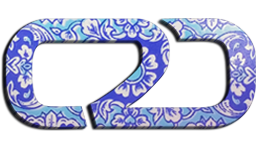F. E. Chaudhry, Pakistan’s first professional press photographer, extensively covered the activities of the Muslim Leagues’ struggle for the independence. Credited to have taken photographs of Quaid-i-Azam, he followed the lives and career of all the Muslim League leaders, including Liaquat Ali Khan. As a visual chronicler of his times, he photographed the upheavals of partition and the migration of thousands of refugees from across the newly-drawn dividing line between India and Pakistan.
quaidazam.jpg
Quaid-i-Azam Muhammad Ali Jinnah addressing students and teachers at the Islamia College, Lahore, 1946.
quaidazam.jpg
The workers of Muslim League, marching towards Punjab Civil Secretariat building in 1947.
quaidazam.jpg
Quaid-i-Azam and Fatima Jinnah being received at the Walton Airport by Begum Geti Ara, President of the women’s branch of the Muslim League Lahore and the members of National Guard in Lahore in 1947. Geti Ara was the daughter of Sir Muhammad Shafi, and wife of Bashir Ahmad, Pakistan’s first Ambassador to Turkey.
quaidazam.jpg
Maadr-e-Millat, Fatima Jinnah giving autograph to college girls in Lahore.
quaidazam.jpg
Quaid-i-Azam addressing at the inauguration ceremony of the State Bank of Pakistan, July 01, 1948.
quaidazam.jpg
A large number of refugees from East Punjab crossed the border at Wagha and struggled to find their places in temporary camps, roadside shelters and houses deserted by the fleeing population. In these pictures refugees are seen camping with their meagre belongings in the streets of Lahore, 1947.
quaidazam.jpg
Independence of the country saw one of the largest migrations in history of the world, with an estimated 17.9 million people leaving their homes in a span of six months, travelling in opposite directions on foot, carts and carriages, under administrative transition and divided loyalties. As a result, between 500,000 to 2 million people died although exact numbers are still not known. Refugee carawaans streaming into Pakistan with smiles on faces
quaidazam.jpg
Quaid-i-Azam inspecting the Pakistan Army units in Dhaka Cantonment with the GOC East Pakistan Maj. Gen. Ayub Khan, 1948.
quaidazam.jpg
Quaid-i-Azam, presenting a National Standard to Pakistan Army regiment at Peshawar, 1948.
quaidazam.jpg
During the mass exodus in the years of independence, railway services were choked to the capacity. According to official figures, the North Indian Railways transported 4.7 million refugees in 1947-1948. In this photograph, the refugees are perched on the roof of an over-crowded coach with their belongings.
quaidazam.jpg
At the time of partition, armed forces were deployed to transport families from across the border. Thousands of lives were saved due to protection by soldiers who remained on duty, away from their families to save their fellow citizens from loot, plunder and killing.
quaidazam.jpg
One of the most iconic images of Prime Minister, Liaquat Ali Khan in which he clinched his fist as a show of defiance was taken by F. E. Chaudhry, staff reporter of the Pakistan Times. In the 50s, there was a massive build up of Indian forces across the international border on the western sector leading to serious risk of war between the two countries. However, Prime Minister Liaquat Ali Khan was not to be cowed down by the enemy’s aggression. Instead, in a public speech at the State Guest House in Karachi, Liaquat Ali Khan showed his clinched fist to India and said that he and his people were ready to take on the Indian challenge. However, the event was not properly photographed at that time. Later, when Liaquat Ali Khan was visiting Lahore at Muslim League Office at MacLeod Road, F. E. Chaudhry seized the opportunity to request the Prime Minister to pose for a photo session to which he happily complied. Next day, the photograph was carried by all the newspapers, including the Pakistan Times.
quaidazam.jpg
F. E. Chaudhry (1909-2013) has the singular honour of documenting the Muslim League’s struggle for independence that was taking shape in Lahore. Having worked as a freelancer since 1935 for Civil and Military Gazette, Illustrated Weekly of India, and Statesman. F. E. Chaudhry joined the Pakistan Times, as a full time photo journalist in 1949. He served with its most illustrated editors including Faiz A. Faiz, Mazhar Ali Khan, I. A. Suleri and K. M. Asaf. He was also a commissioned photographer of United Nations. After his retirement at the age of 60, he never worked again; occasionally freelancing, he lived on to spend his life championing the rights of the communities. He died on March 15, 2013 at the age of 103. For his long standing services, F. E. Choudhry was awarded Tamgha-e-Khidmat in 1970, Pride of Performance in 1987 and Tehrik-e-Pakistan Gold Medal in 1992. F. E. Chaudhry was a proud father of Pakistan Air Force, Group Captain, Cecil Chaudhry, (27 August 1941 – 13 April 2012), who was a legendary fighter pilot of Pakistan Air Force. He participated in a number of aerial battles during the 1965 and 1971 Indo-Pak wars. He was credited with several air-to-air kills and was one of the distinguished Pakistani strike and fighter pilots of the period. In recognition of his meritorious services, he was awarded with Sitara-e-Jurat and Sitara-e-Basalat. After his retirement, he served as an educationist in Lahore. President’s Award for Pride of Performance was also awarded to him posthumously in 2013 for his lifelong contributions.
quaidazam.jpg
The picture of Cecil Chaudhry as a young pilot was taken by his father F. E. Chaudhry in the 50s.


The writer is an anthropologist, former Director of National College of Arts, Rawalpindi campus, currently working for the Center for Culture and Development (C2D), Islamabad & Vice President of the Council of Social Sciences.
